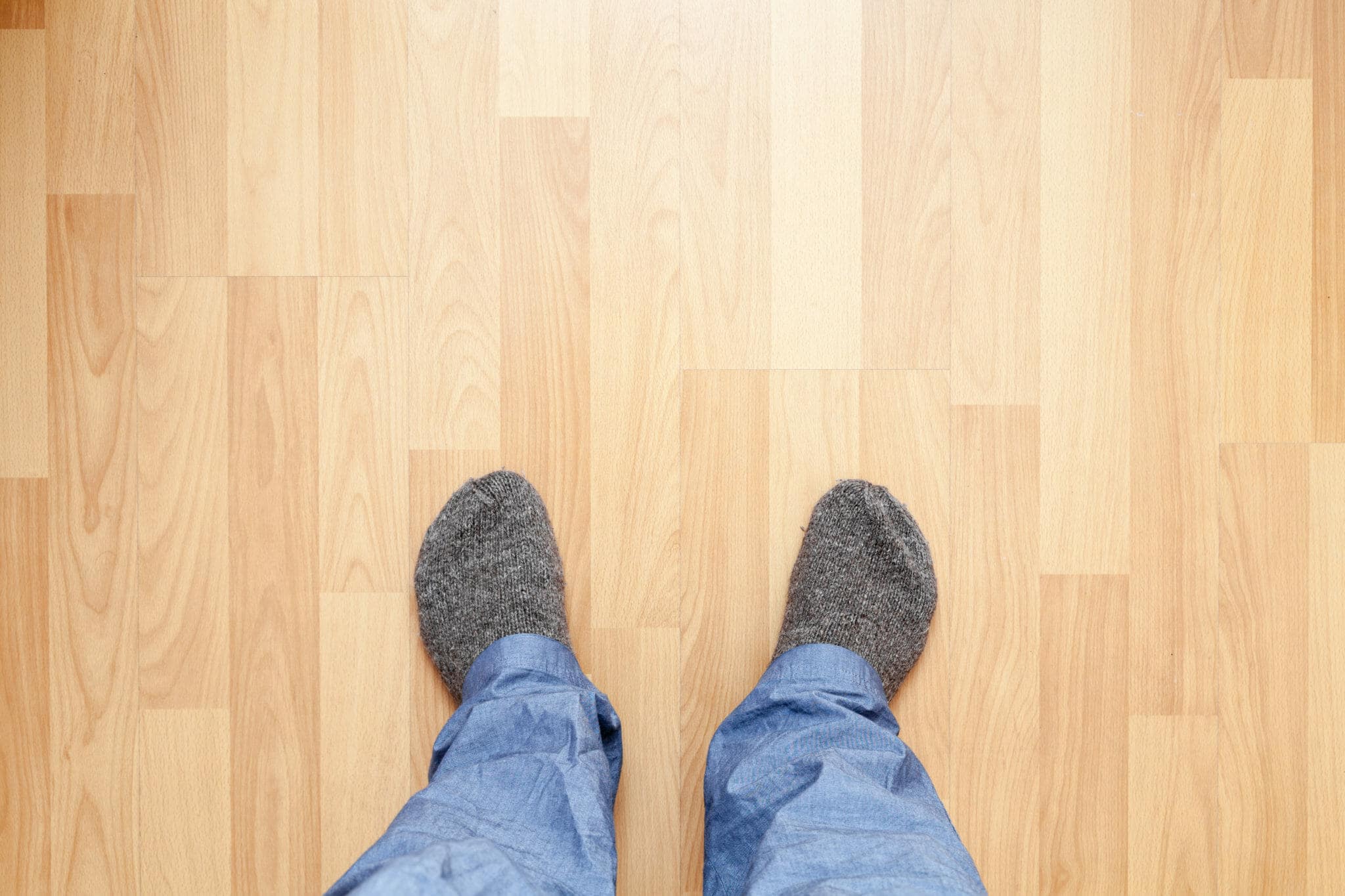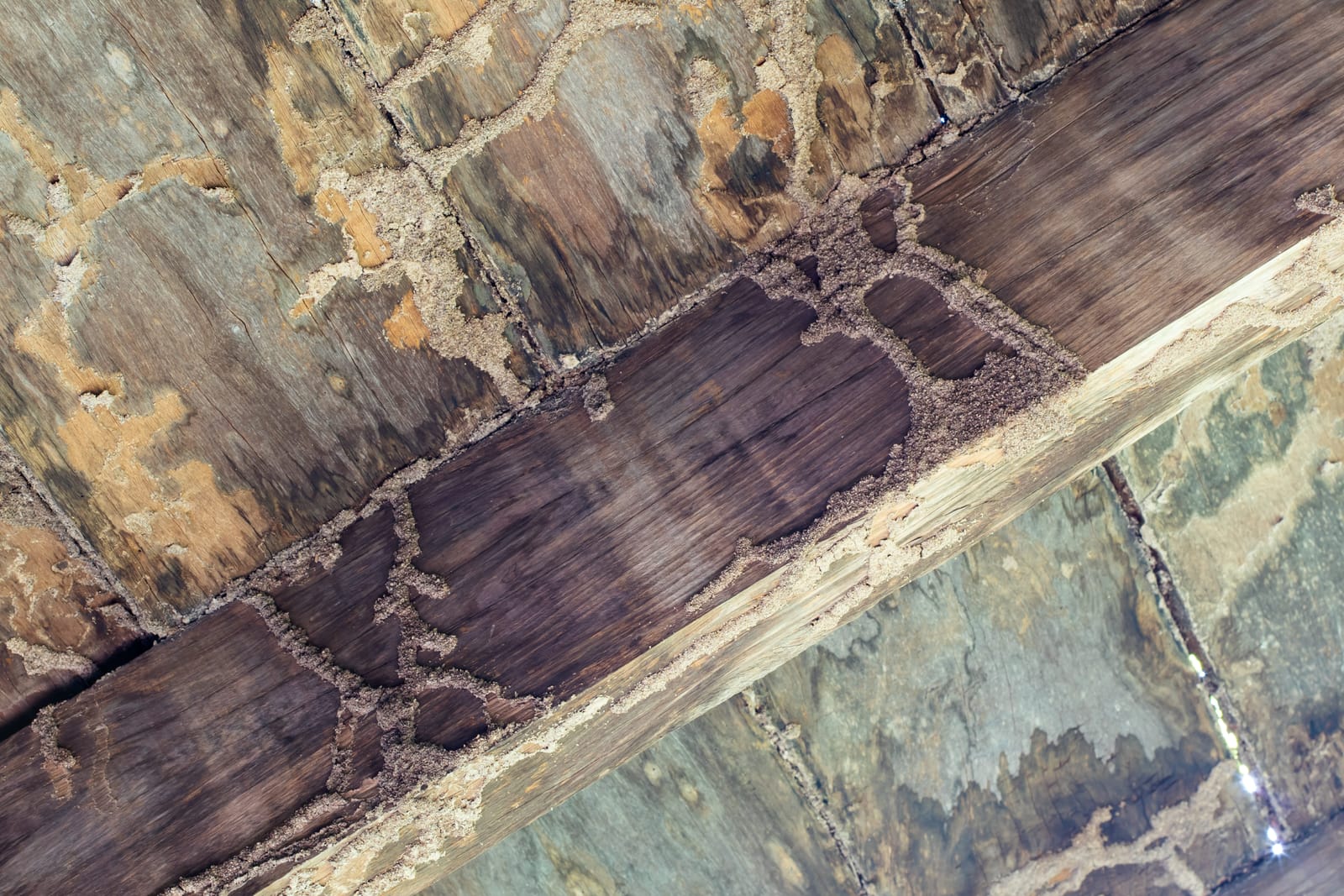Bouncy and Spongy Floors Can Be A Structural Concern Or Merely An Annoyance


David Jones
Senior Contributor
David Jones is a seasoned home inspector and construction expert with over 20 years of experience. He specializes in structural integrity, foundation issues, and detailed home safety assessments.
View Full Profile →
Spongy and bouncy floors generally are of little concern unless the cause relates to a serious structural issue. As homeowners we quickly get used to a floor that has a little bouncy or spring to it as we walk across it and seldom give any thought to whether there is a problem. Whats funny is that a first time visitor or home buyer will notice that a floor is spongy; they will often stop when they notice it and even shift their weight up and down to verify that it is spongy.
Who Wonders About a Spongy or Bouncy Floor?
Answer – Structural engineers
Since one of the warning signs of foundation or framing problems is a spongy or bouncy floor, engineers will usually examine why a floor or section of a floor is spongy. Not only will they note how much movement there is, but they will also listen for creaking or popping sounds and look for other “Red or Yellow Flags” of structural issues.
Anatomy of Floor Layers
Most floor bounciness or sponginess relates to layer number one or layer number two issues.
Layer #1: the basic support layer
Layer #2: the sub floor layer
Layer #3: the finish floor layer
#1 The support: Concrete Slab, Floor Joist or Floor Trusses
Most floors are laid over or supported by either a concrete slab, floor joist or floor trusses.
Concrete slab
A concrete slab is usually poured on top of the soil (ground) and is about 4 to 6 inches thick with steel reinforcement in the concrete to make it stronger and reduce cracking.
Homes with a concrete slab often have tile, carpet, laminated or other types of wood flooring or some form of vinyl or linoleum flooring laid on top of the concrete. A few, very few, will just have the concrete slab exposed with no covering: often stained or polished as the finished floor.
#2 Wood floor joist
Wood floor joist are horizontal structural framing members placed on their edge running from wall to wall or wall to beam. These floor joists are often 2 x 6, 2 x 8, 2×10 or 2 x 12 pieces of lumber running parallel to each other that the sub-floor is laid on. They are usually spaced 12, 16 or 24 inches apart; the size and spacing is based on the length of the span and load (weight) that they’re carrying.
#3 Floor trusses
Floor trusses are engineered framing members which are manufactured off site and transported to the building site by truck. They basically serve the same purposes as a floor joist but are often more economically and can be used on longer spans. Just as floor joist, they usually carry the sub floor.
The Sub Floor Layer
A sub floor generally lays on top of floor joists or floor trusses and will normally be laid perpendicular to the joist or trusses: it should be considered structural in nature, not cosmetic.
In older homes the sub floor may be 2×6’s or 1×6’s laid perpendicular or at a 45 degree angle to the floor joists or trusses. In some cases (i.e. older homes on a raised foundation) with a post and beam support system; 4×4’ or 4×6’s may be used in place of floor joist or trusses.
Plywood and OSB sub flooring
The most common sub flooring materials being used to in homes today are OSB, Oriented strand board and plywood. These are often in 4 x 8 sheets and 1/2 to 1 inch thick and either nailed or screwed down to the floor joist or trusses.
Finish Floor
The finish floor layer is the top layer. It may consist of carpeting, tile, vinyl, linoleum, laminated flooring or other similar products. In addition to the floor being bouncy or spongy, you may see cracks in the tile or grout, if it’s a tile floor or hear a snapping or creaking sound if its a laminated type of floor.
At times there may be spongy floors that appear to slope or sag, as well as, being spongy. This may indicate that there could be more than one cause of the spongyness or that there should be a little higher level of concern.
7 Common causes of spongy or bouncy floors
When thinking about why a floor is spongy or bouncy, step back a think about some of the reasons listed below, see if any of them explain why your floor is spongy or bouncy.
1. Water damage to sub-floor
OSB board and plywood will not stand up to water over time; the glues that hold these two products together easily fail after prolonged exposure to water. Plumbing or roof leaks that go undetected or not repaired in a timely fashion can cause deterioration of the structural strength, resulting in sponginess.
Moisture stains on the floor may indicate that there has been a leak or moisture issues. Check the base boards and lower portions of the wall for stains as well. If dark discolorations are noted, then there may be a mold and mildew, which usually means that there is a moisture problem. Musty odors are another indication of mold or mildew.
2. Damage from rain and snow doing construction
During construction if the wood sub flooring (OSB Board or Plywood) gets wet, especially for prolonged periods of time, the sub floor loses a portion of its structural strength. Homes that are built during the rainy season and fail to get roofed and wrapped properly are more susceptible to this type of damage.
3. Damaged floor joist or floor trust

A cracked floor joist or truss may weaken the support holding up the sub floor. Once weakened it will no longer be as stiff but may be spongy, especially if there are two or three framing members that are cracked or damaged next to one another.
Crack damage may occur for a number of reasons. Floor joists or trusses may crack because there was too much weight put on them, i.e. when building the home the contractor put a heavy pallet of floor tile in center of the floor or a large stack of plywood that was just too heavy for how the floor was engineered. Thus, damaged or cracked trusses or joists. If during a storm a heavy tree came crushing down on the home, it could damage the joists or trusses.

4. Termite damage to floor joist or truss
Termites love to dine on wood and in doing so they will weaken it, eventually to the point where it loses much or all its structural strength.
Over the years this type of damage and deterioration will cause a floor to flex or feel spongy and if not attended to, it will fail.
5. Trusses undersized, spaced too far apart or sub floor not proper strength for span
Trusses that are undersized for the weight that they are carrying will often sag, be bouncy or spongy when walked upon. A long piece of wood will tend to bow when weight is placed on it, this is natural, however, building codes and engineers have guidelines on how much is acceptable or safe. The closer that floor joists or trusses are together, all other things being equal, the more weight that they can carry and there is less bounciness or deflection.
Depending on a number of factors, if you have a floor that spans 10 feet in length, then a defection of a 1/4 or 1/3 of an inch might be acceptable. If the floor deflects a 1/2 of an inch there may be a concern.
Basically, undersized floor joists or trusses, or spacing too far apart may lead to sponginess.
Sub floor undersized or engineered
If the sub floor is not strong enough to span the distance between the floor joist, trusses or supporting beams, then sponginess may occur. If the sub floor is 1/2 inch thick and it should have been 5/8 or 3/4 of an inch thick, then you may get sponginess or sagging.
Homes on raised foundations
Many homes on raised foundations may have a post and beam construction supporting the floors. It is not uncommon for this type of construction to have post piers that will settle or shift over time. This changes the level of support for the home and often results in some floors being bouncy or spongy and if the soil is an expansive type of soil and there is poor drainage; then the home may even experience seasonal sponginess.
6. Engineering and sizing issues
Floors, roofs, foundations and many other components of a building are required by code to meet certain structural requirements. This process normally requires an engineer to calculate what size the foundation is required, what size of rafters and how far apart they should be and to calculate what size of floor joist or trusses are needed; including the type and thickness of the sub floor.
Should an engineer miscalculate or the builder fails to follow the plans, then a flooring system may sag, be spongy or even fail. This does not happen very often. However, if there has been remodeling, an addition or walls moved and there was not a set of engineered plans, then problems may arise. If no permit was obtained, the likely hood of improper engineering or poor workmanship increases, and problems may arise; anywhere between minor to major.
7. Lack of “Cross Bracing” or “Blocking” where beneficial
There may be no or insufficient cross bracing or blocking between the joist or trusses. Blocking and cross bracing helps transfer part of a floor load to the adjacent truss or joist. Doing this helps stiffen a floor and reduce sponginess or bounciness.
If a concrete slab but finish floor is spongy in places
Homes that are built on a concrete slab seldom have spongy floors, but there are two conditions where they may have a spongy floor. Usually the sponginess will only be in a small area (i.e. 2 to 4 square feet) and not the entire floor.
-
If there is a second floor or a raised section of a floor that is framed, rather than directly on the concrete.
-
If a finish floor is laid directly on a concrete slab and it’s spongy, then the reason may relate to:
Flatness of the floor. If the concrete slab is not flat but dips in places or has a hump, then the flooring laid on top of the slab may bow or be spongy when stepping on the areas that dips or does not have a fully flat surface. Laminate flooring is susceptible to this and may even make a creaking of snapping sound when stepped on.
The Bottom Line
Spongy and bouncy floors are normally not a significant problem but in a few instances, they can be a warning sign of a structural issue. Knowing some of the reason why floors are spongy and the causes can help one determine whether further investigation should be done.
If a second story floor is spongy or bouncy and the first-floor ceiling under the spongy area has drywall cracking in the ceiling or cracked and damaged plaster, then there should be a higher level of concern. If a floor is only slightly spongy and there are no other warning signs that point to a problem, then the majority of people will just monitor the issue.
Note**.** Many of the causes for spongy and bouncy floors may also be associated with sagging floors or floor failures.